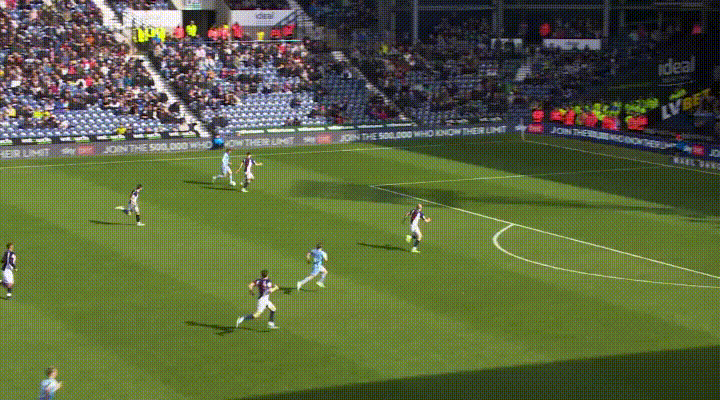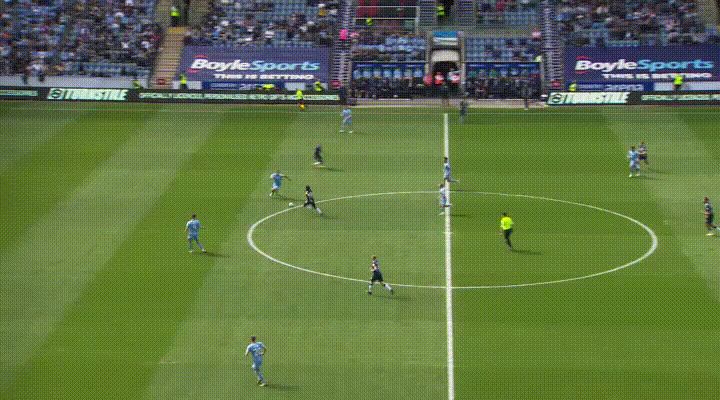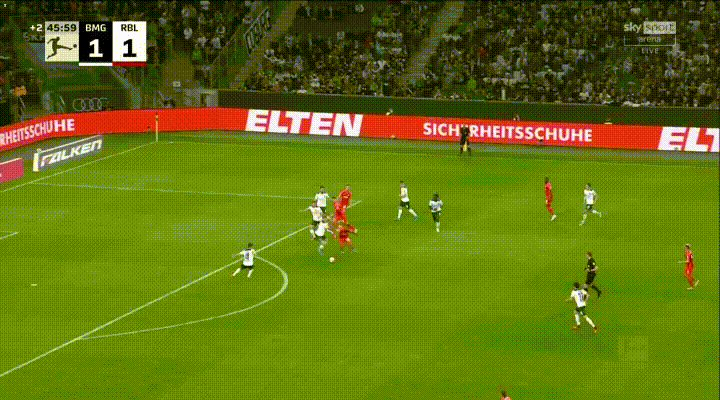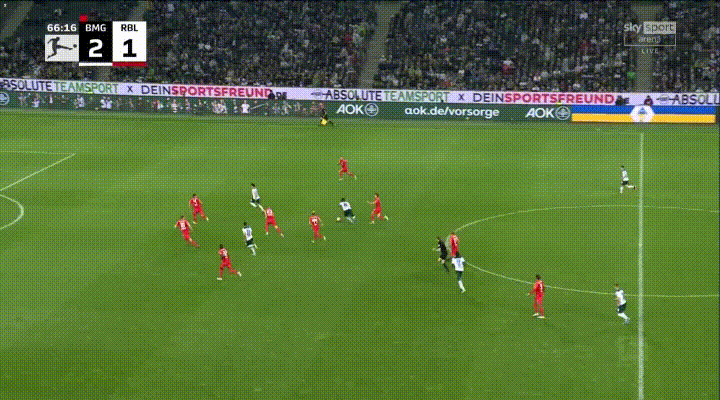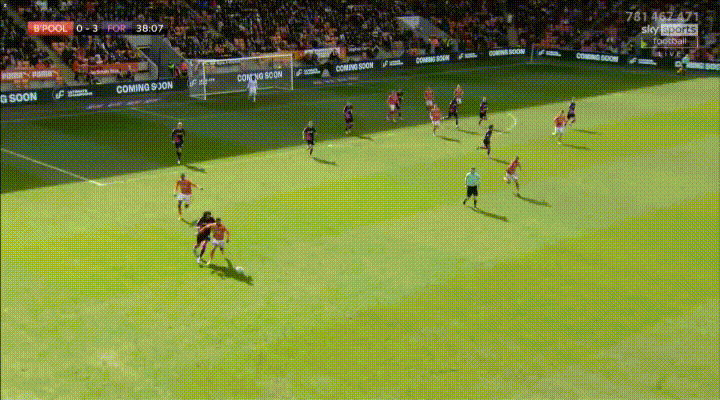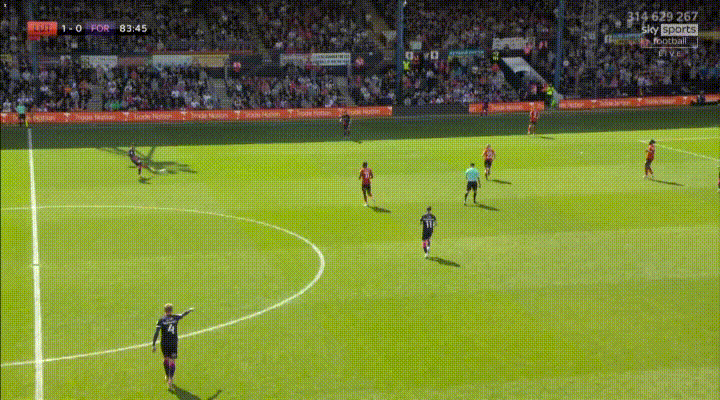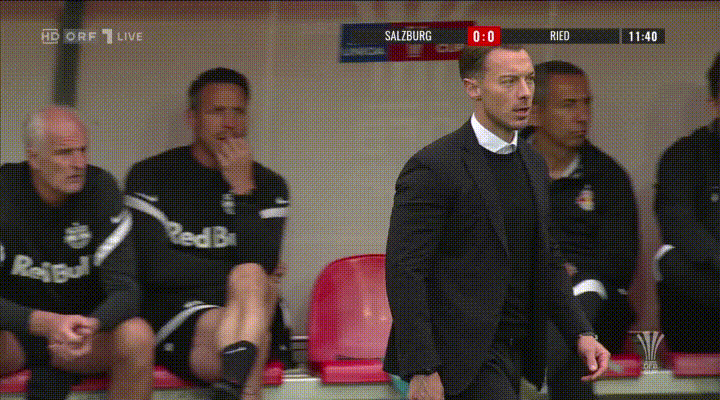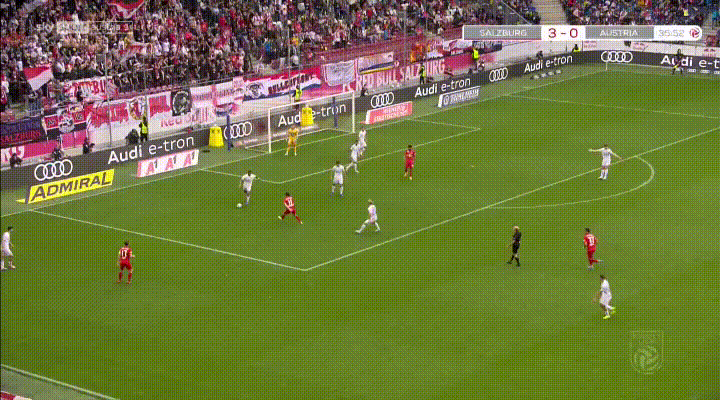In the modern era of the Premier League, Southampton have often been seen as the blueprint for how smaller clubs can establish themselves as midtable teams through an innovative transfer policy. They frequently take risks on less established players, usually between the ages of 22 and 26, allowing them to compete with clubs that would otherwise financially outmuscle them. Although this approach doesn’t always produce players of the requisite quality, they rarely ever make big losses, and when it works, the profit generated allows them to reinvest, thus repeating the cycle. This summer, the club will no doubt be looking to improve their first team again, more specifically up front, where poor performances and expiring contracts have made their options look threadbare to end the season. In this article, we will analyse Southampton’s current striking options and identify some potential targets that fit their transfer strategy.
The Saints’ Set-Up
We will start by looking at the team’s general game plan, and therefore what profile of striker would best suit them. Southampton most commonly play a variant of the classic Red Bull philosophy that manager Ralph Hasenhüttl helped to establish during his spell at RB Leipzig. The standard shape is a 4-2-2-2, with the attacking midfielders drifting inside to create central overloads and the strikers often drifting out wide to support the fullbacks, who occupy advanced positions in possession. This horizontal rotation helps pull defenders out of position, which creates space for Southampton’s attackers to exploit. When the ball is lost, they counterpress in order to recover possession high up the pitch, although this is not as intense as it was during Hasenhüttl’s first full season in charge (Saints averaged a PPDA of 8.88 in 19/20, but this has since dropped to 10.15 this season). This change has somewhat set the tone for Southampton in recent seasons, as they have tried alternative systems to their usual shape, instead playing something of an asymmetric 3-4-3 with Yan Valery operating as a hybrid fullback/centreback.
This set-up has been fairly successful, especially from an attacking point of view, as Southampton currently sit 8th in the league for non-penalty xG created per 90 minutes. However, they are the 3rd worst in the league at taking these chances, with a non-penalty goal minus npxG of -6.8, only bettering Brighton and Norwich.
Current Striking Options
So, what do Saints’ current options look like? They have 5 players that have played Premier League minutes as part of the front two this season, with the profiles and partnerships varying depending on availability and form:
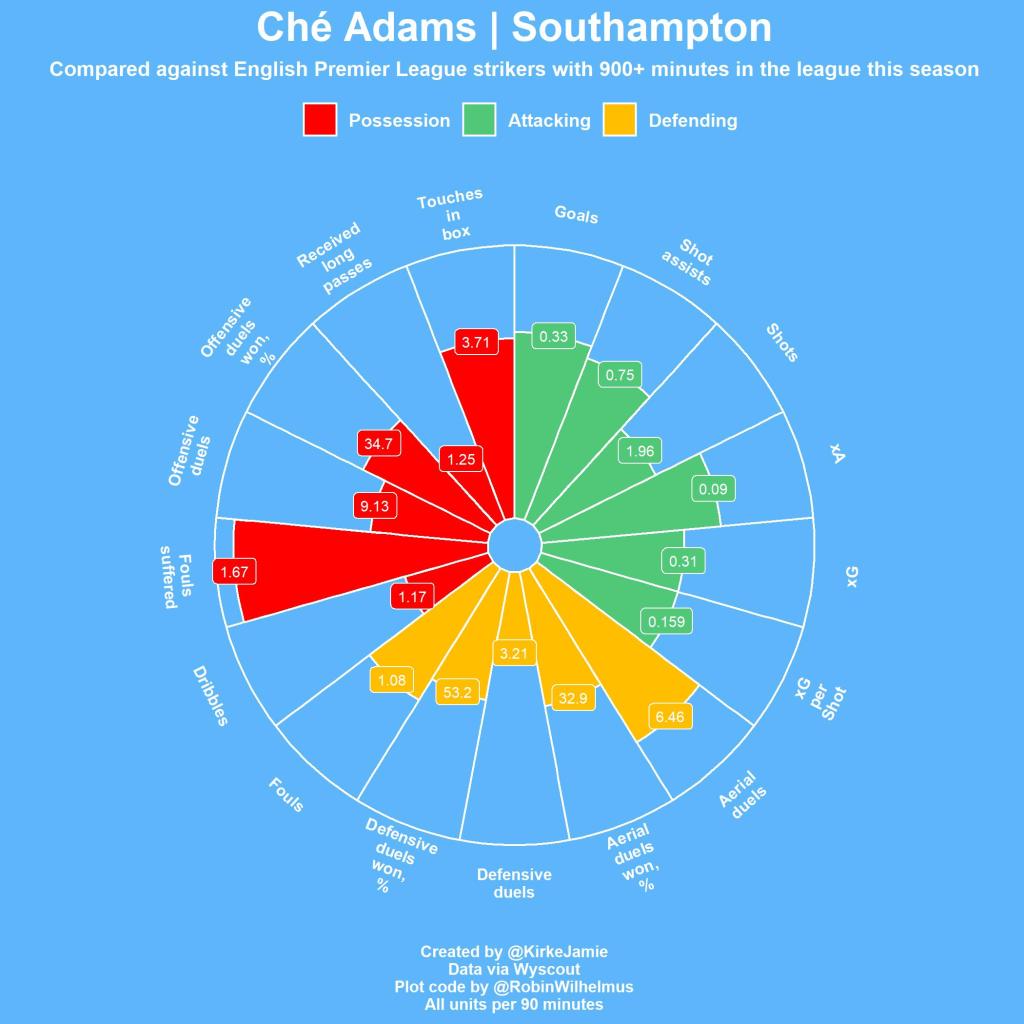
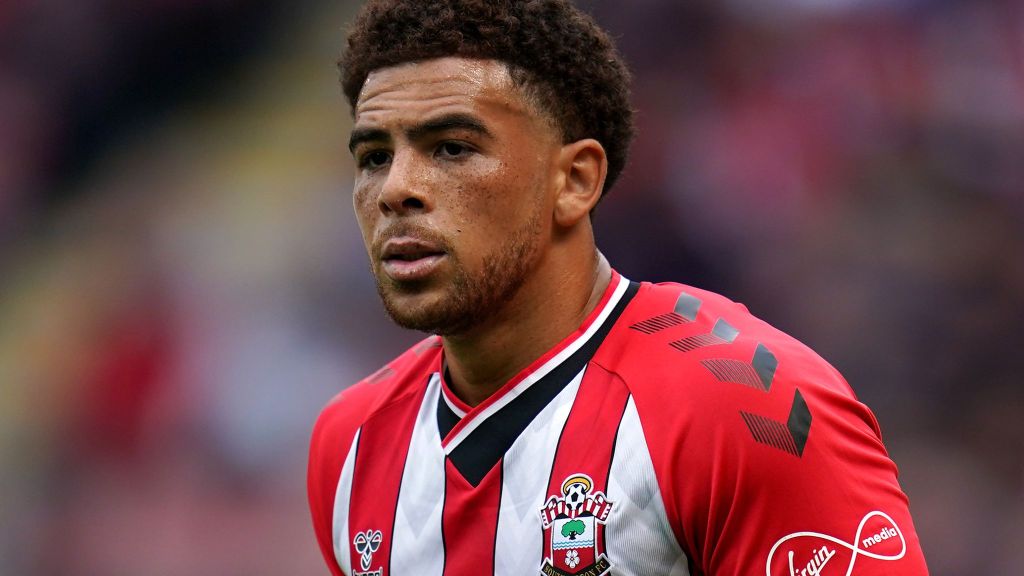
The most frequent starter in the front line has been Ché Adams, who has played 1,938 minutes across 27 games. Having been bought for £15 million from Birmingham City before the 2019/20 season, Adams is Saints’ highest scorer from open play and arguably their best attacking facilitator, offering a lot of threat with his back to defenders — often pinning his marker before sliding in his team-mates. The nature of his skillset means he’ll never generate a lot of shots off the dribble, as he struggles to beat defenders 1v1, but his movement in the box compensates for this, consistently arriving in dangerous areas from deep and gambling on the ball arriving in that space.
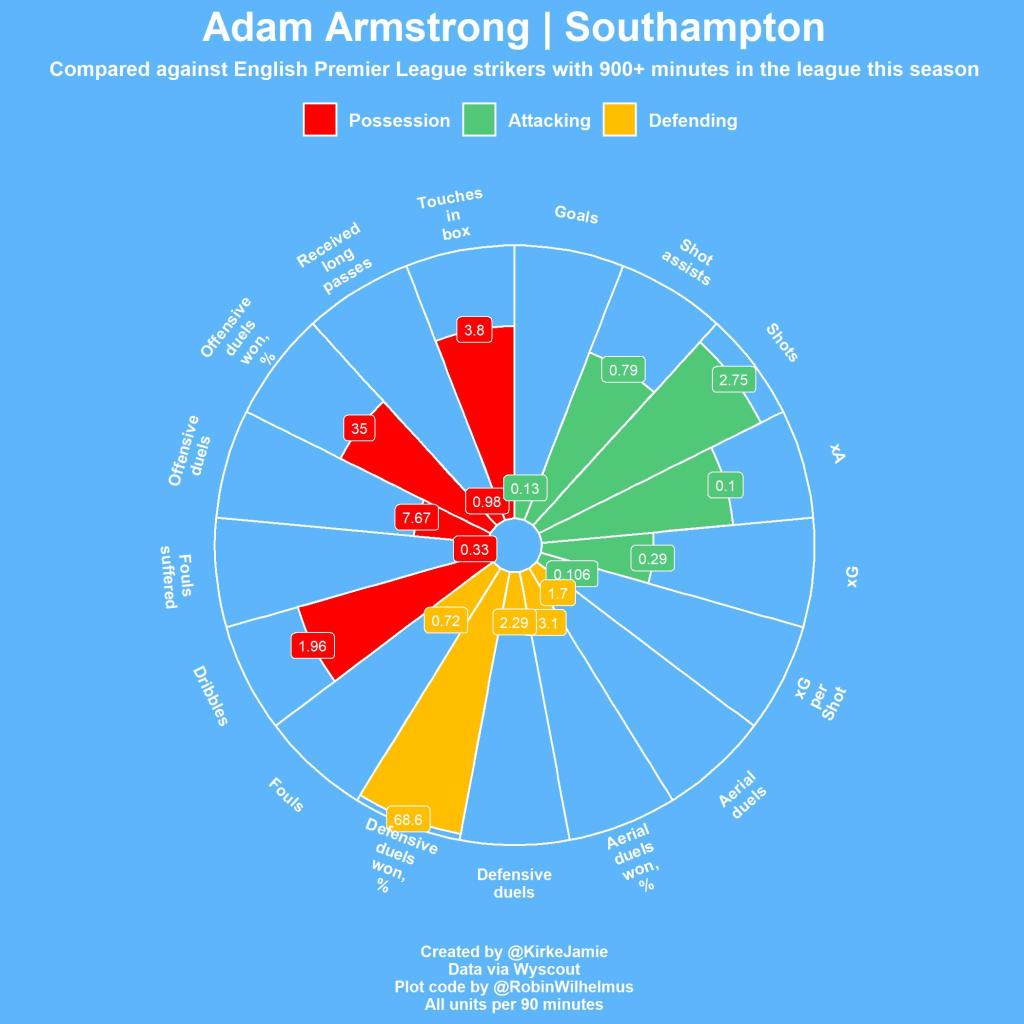
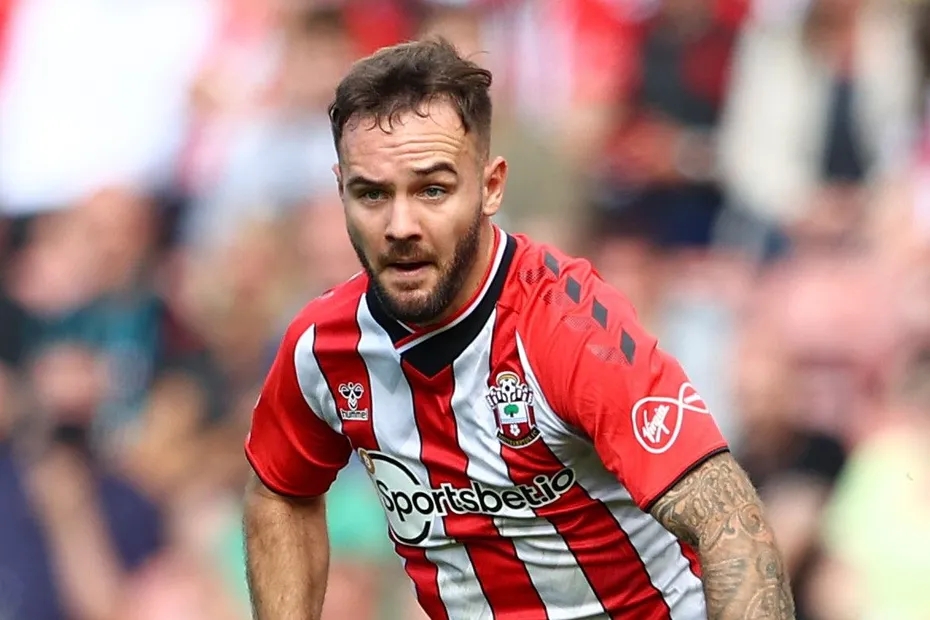
To start the season, Adams’ most common partner was Adam Armstrong, bought from Blackburn Rovers last summer for £15 million. As a willing runner and high volume shooter, albeit from fairly poor locations, Armstrong seemed like a natural fit to play alongside Adams due to their complementary skillsets. However, he has struggled in his debut Premier League season, only scoring twice in 1,261 minutes, and has barely featured since February.
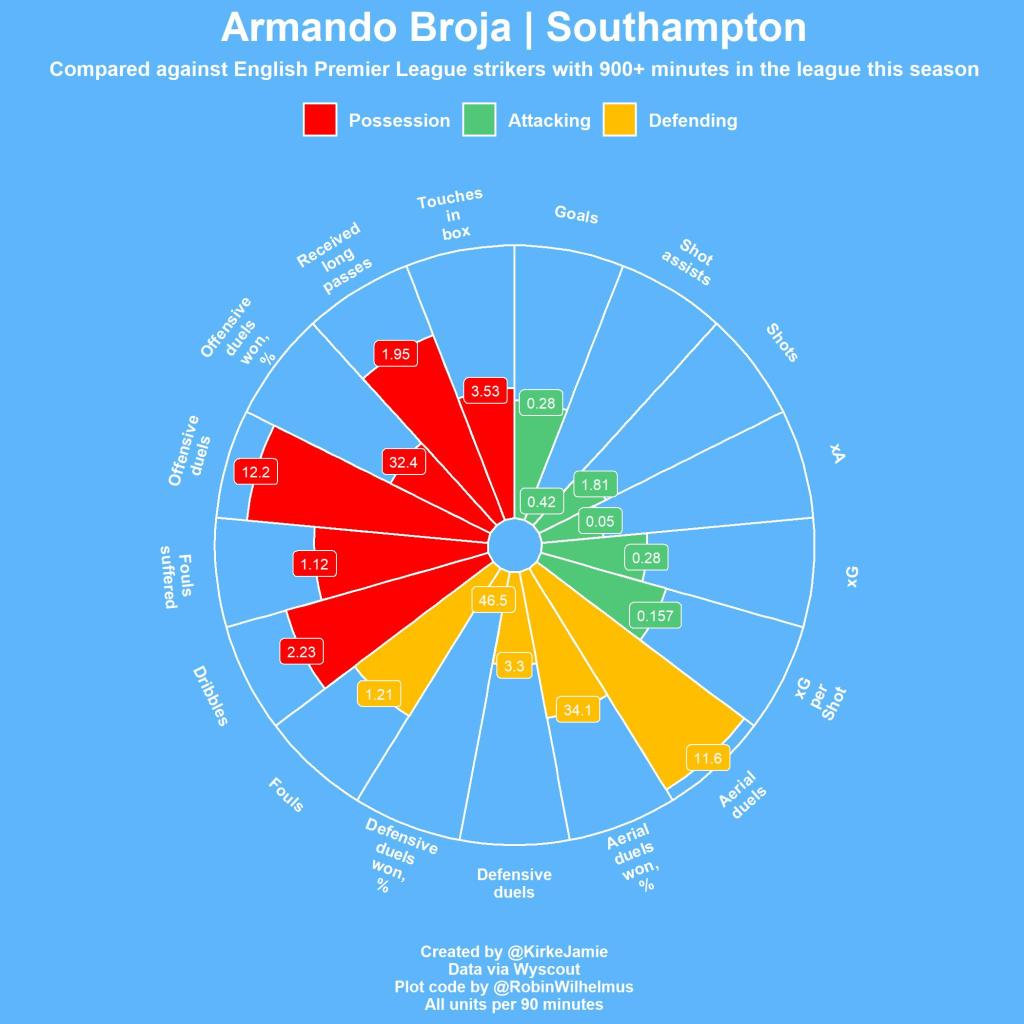
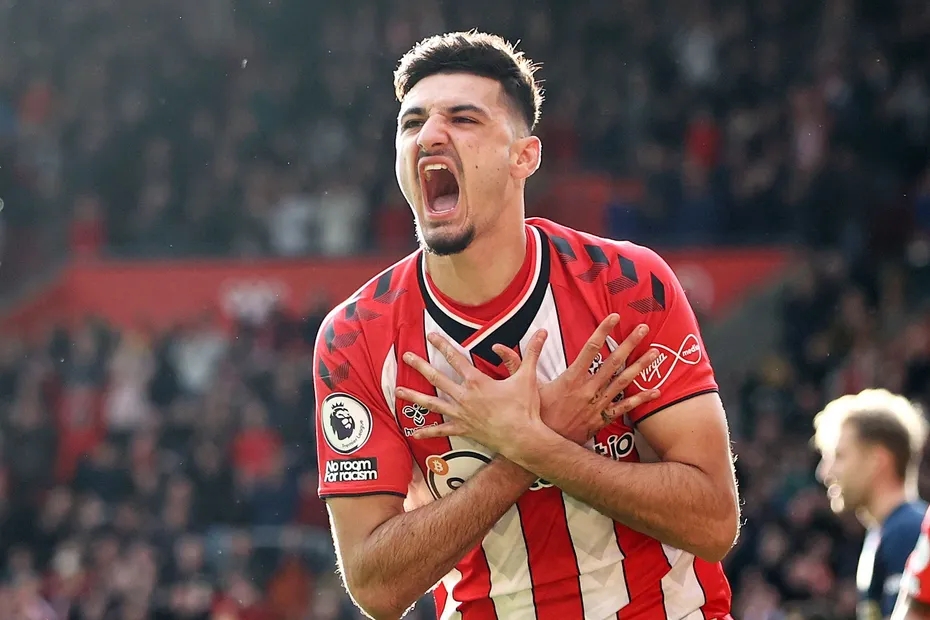
Instead, Hasenhüttl has given a lot of chances (1,778 minutes across 29 matches) to Chelsea loanee Armando Broja, who is also experiencing his first season at Premier League level. Broja has scored 6 goals from open-play, and shown an ability to beat players with the ball and create chances for himself, making him difficult to defend. Although clearly very talented, Broja is still quite raw, and there are questions about whether he’ll be able to return on loan due to Chelsea’s current transfer embargo. Therefore, Saints should look elsewhere for striking options next season.
The other two players that have featured up front are Shane Long and Nathan Redmond. Long is 35, out of contract this summer, and not expected to renew, having only played 236 minutes so far this season. Redmond has played a fair bit more, featuring in 23 games for 1,481 minutes. However, this has been split between striker and attacking midfield, and therefore it feels unfair to count him as a consistent option as the former.
Potential Transfer Targets
Based on his usage this season, I am filtering my search to find a player similar to Armando Broja in skillset, specifically looking for a forward that frequently dribbles, competes in offensive duels, and presses willingly, all while being a fairly consistent goal threat. After analysing a dataset of strikers across Europe, we have identified 4 players that fit this mould:
Viktor Gyökeres, 23, Coventry City
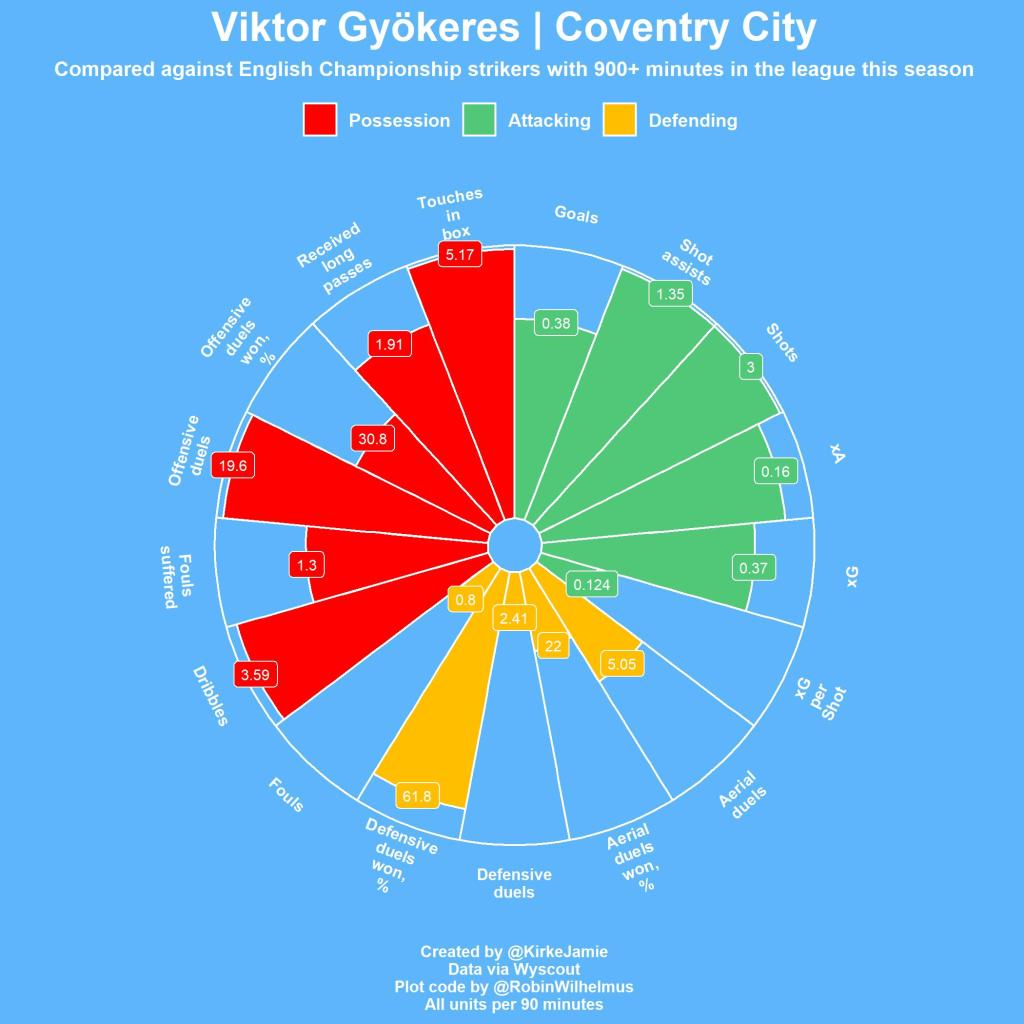

The first player we identified is Coventry City’s 23-year-old striker Viktor Gyökeres. The Swede has scored 15 goals across 42 Championship appearances this season, playing as part of a front two in City’s 3-4-1-2; a role and system which makes him a good option for the Saints. His best attribute is his off-the-ball work – he presses very well, frequently curving his runs to block off passing lanes and working very hard to counterpress when he loses the ball. Coventry also play with a similar pressing intensity and structure to Southampton, which is shown by their PPDA of 10.23 and their focus on forcing the opposition out wide in build-up.
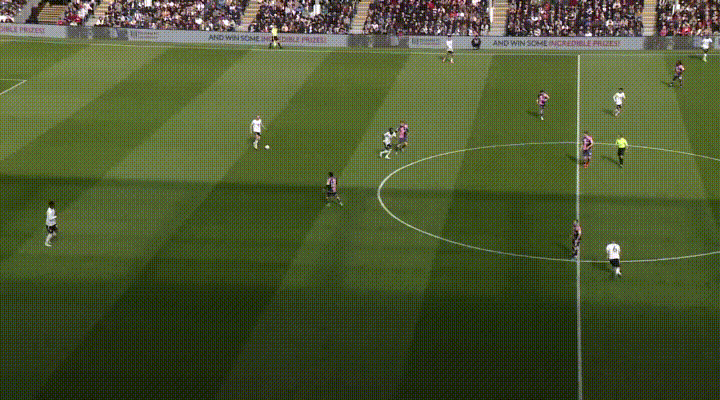
In possession, Gyökeres looks to receive with his back to defenders and spin in behind, especially in wide areas, which explains his high offensive duel and dribble numbers. He wants to beat defenders himself, which he does very well thanks to his close control and ability to twist his body away from opponents, but he has a strong awareness of his team-mates and can lay off the ball to others to springboard attacks. In the final third, he can be more selfish, always looking to receive wide on the left-hand side before driving inside to shoot – this explains his high shot volume but fairly low xG per shot. This might mean that he wouldn’t work well with another high-shot volume striker like Adam Armstrong, but he does create a lot of chances for teammates as his physicality and ball carrying draws a lot of defenders towards him.
Although he’s strong when on the move, he struggles to hold his ground against big centre backs, meaning he’s not brilliant at winning balls in the air. He does do better with crosses however as he can use his good penalty box movement to pull away from defenders into space. He also isn’t particularly quick, so a lot of his attempts to stretch the back line vertically are covered by defenders, something that likely won’t improve in an even greater physically demanding league.
With his contract not up for another 2 years, and Coventry likely desperate to keep hold of him, Gyökeres might not be available on the cheap this summer which, given he’s inexperienced outside of second tier competitions (having never made a PL appearance for Brighton), might make him a big risk. However, given his very strong stylistic fit, Southampton could definitely be tempted to bring the Swede back to the south coast.
Breel Embolo, 25, Borussia Mönchengladbach
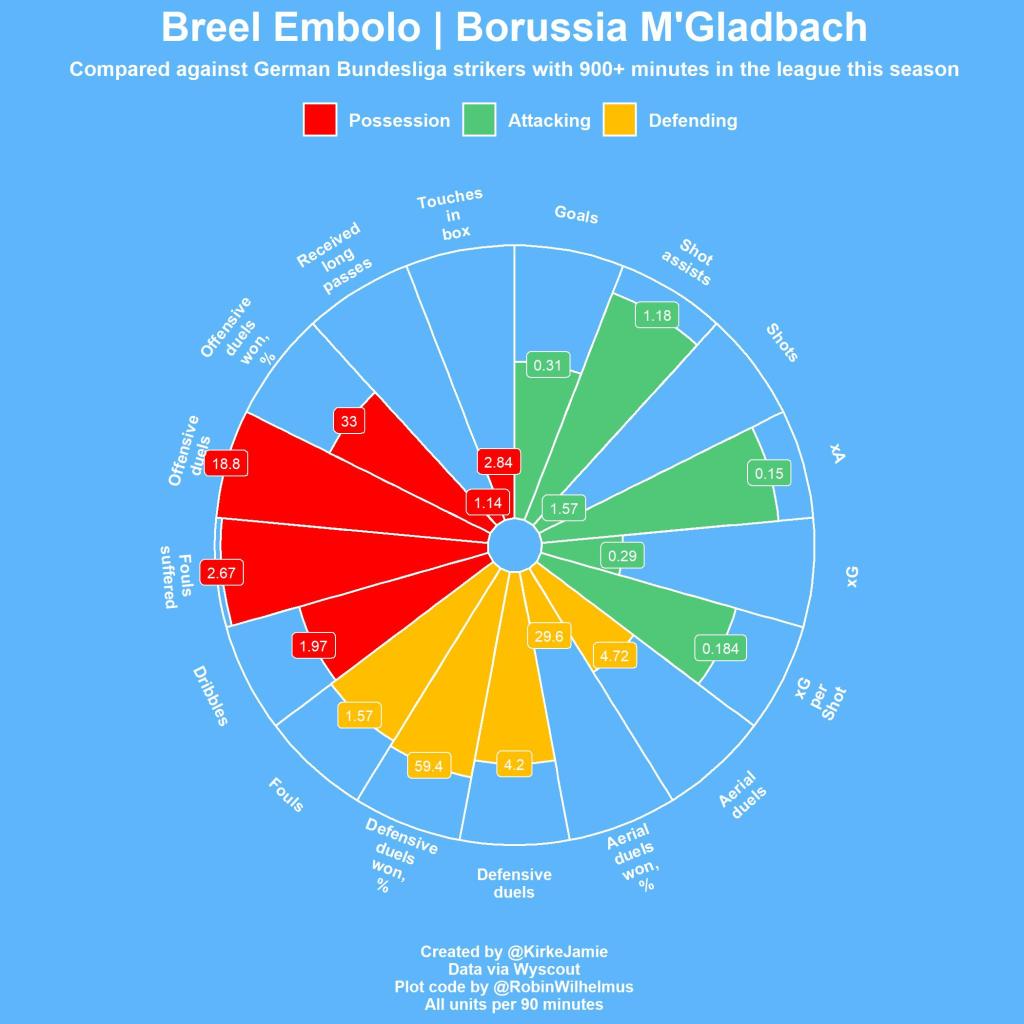
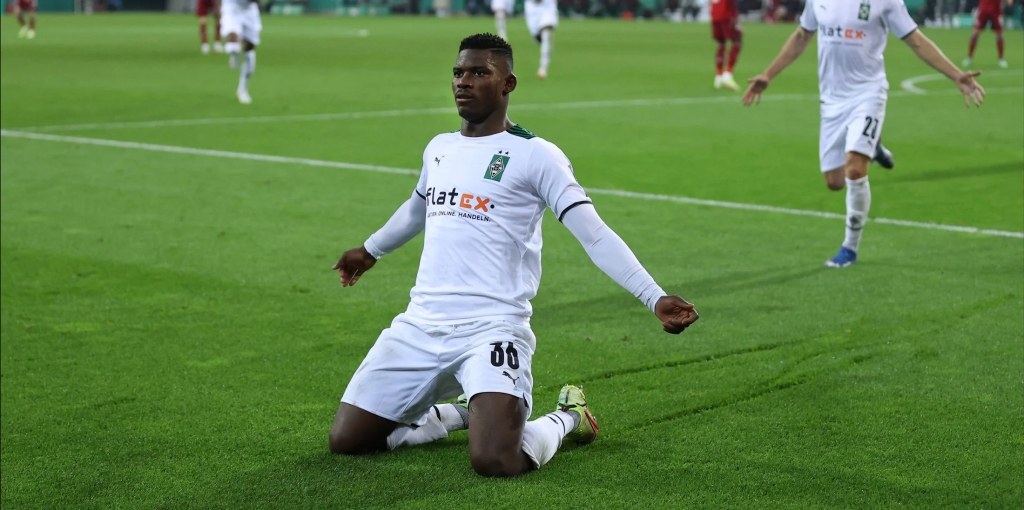
The next player that stood out is Borussia Mönchengladbach and Switzerland’s 25-year-old striker, Breel Embolo. Embolo has scored 7 goals in 25 league games this season, having frequently played as the sole striker in either a 4-2-3-1 or a 3-4-3. This role is very similar to that played by Ché Adams, more of a supporting striker than a goalscorer, and it’s easy to see why Embolo fits this mould well. He is fantastic with his back to defenders, thanks to his great body positioning and stocky build that allows him to keep himself between his opponents and the ball. This constant shielding makes him particularly adept at drawing fouls which not only helps relieve pressure when his team are defending deep, but also creates dead-ball situations in the opposition’s final third – something that James Ward-Prowse will particularly appreciate.
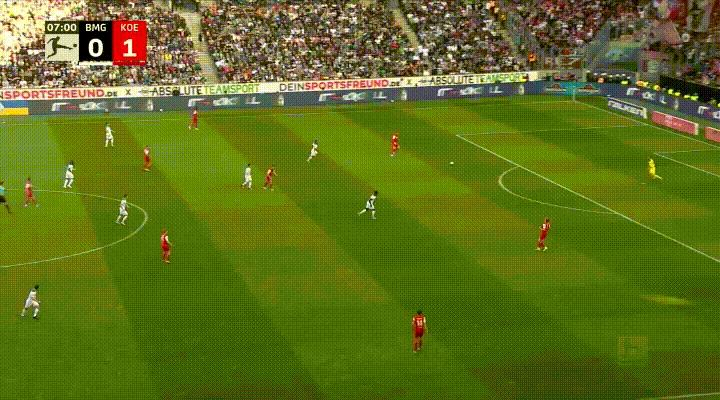
It would be wrong to characterise him as a purely physical player however, as his movement is very clever, frequently dropping into the hole to receive, turn, and then lay off to onrushing teammates. His strong first touch allows him to receive and release very efficiently, and his weight of pass in tight situations is always very good, making him capable of deft little touches past pinned defenders. Off the ball, he’s active and robust in the press and counter-press, although the defensive shape would likely be slightly different from what he is used to at Gladbach.
The main drawback of signing Embolo is his fairly limited presence in the opposition box. His deep starting positions means that he struggles to maintain a consistent goal-threat, and he lacks Adams’ penchant for driving to the six-yard area, instead preferring to hang back and attack the edge of the box. This is likely due to his lack of speed. Although not a slow player once he gets moving, he doesn’t really have the explosive burst necessary to get away from defenders, and this can limit his threat in behind, even if his initial movement is good.
Having played in the Champions League as recently as the 2020/21 season, Embolo could be something of a real coup for Southampton and, given that his contract expires in 2023, he would be unlikely to command a significant fee. The only question would be whether he offers enough variation from Adams to allow them to work together up front.
Keinan Davis, 24, Nottingham Forest (on loan from Aston Villa)
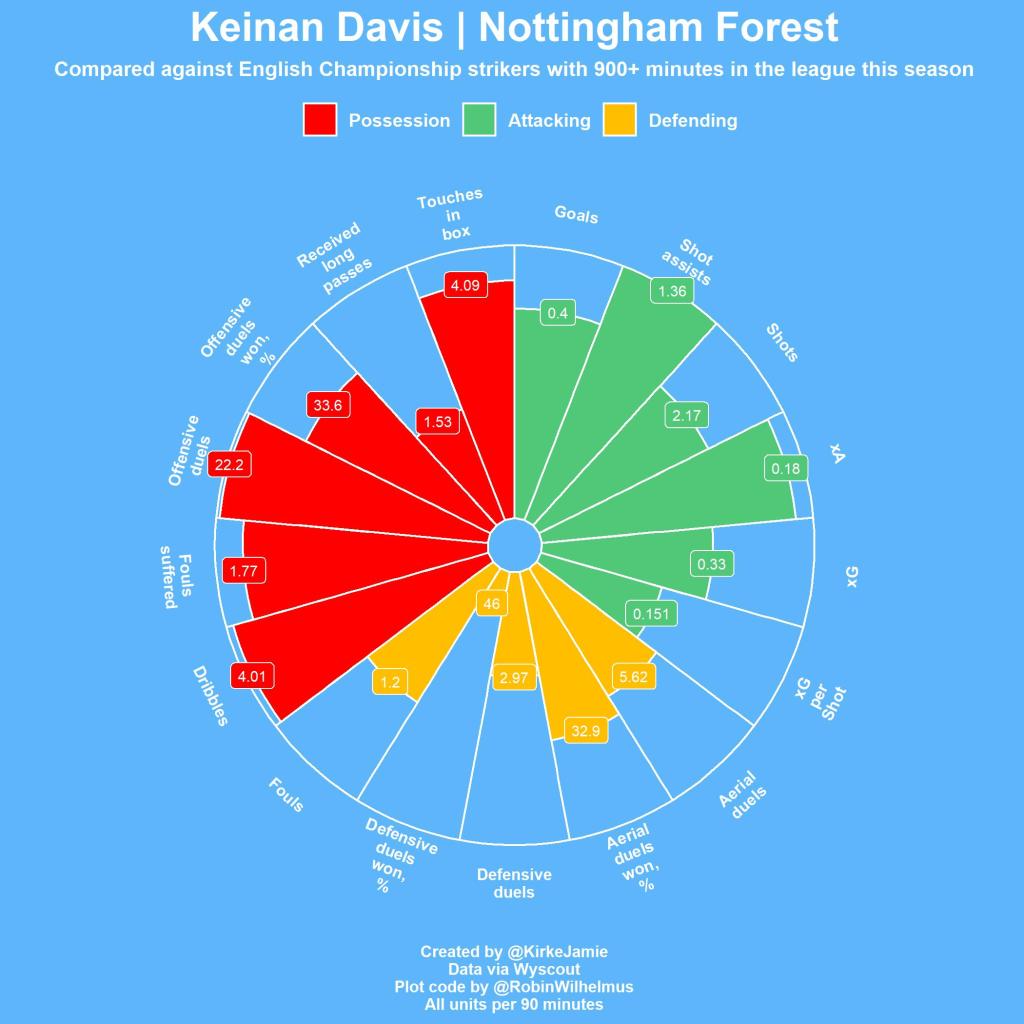
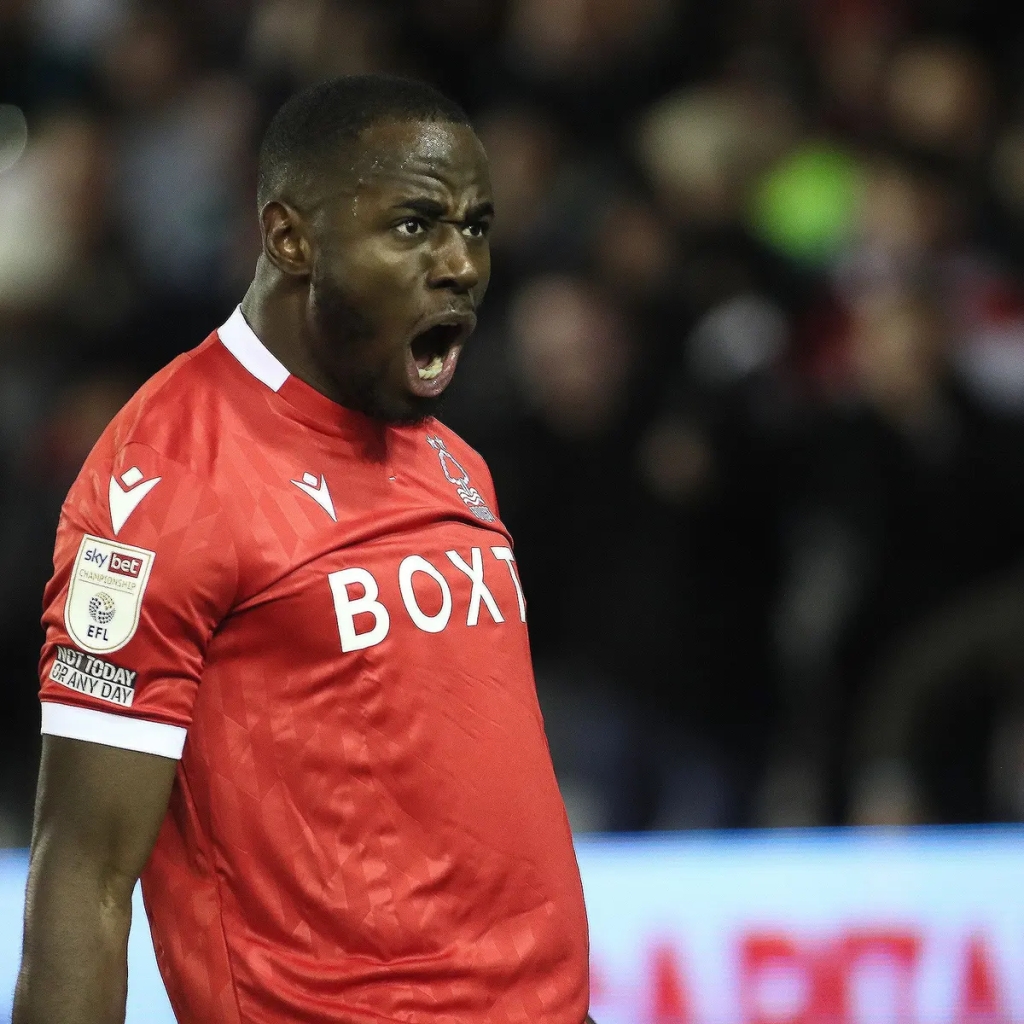
Another potential target is Keinan Davis – Aston Villa’s 24-year-old forward, on loan at Nottingham Forest until the end of the season. After barely seeing any Premier League playing time in the first half of the season, Davis was loaned to the City Ground in January and has made a strong impression, scoring 5 times in 15 league games as part of Steve Cooper’s flexible 3-4-3/3-4-1-2. Playing on the left-hand side of the front two, alongside Brennan Johnson, Davis is given license to drift into the half-space on his stronger left foot and drive at defenders, something he does very well.
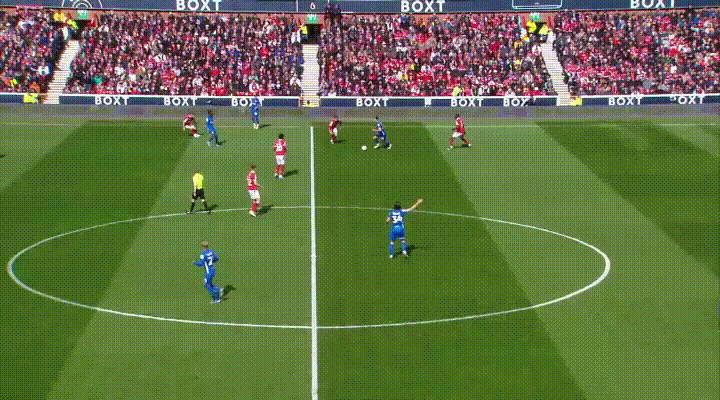
He’s very quick across the ground and has good feet, able to pivot away from his man quickly after receiving the ball. In more settled phases of play, he will look to drift into more central areas and hold up the ball. This allows him to be used as an attacking focal point for Forest, laying off the ball to team-mates before spinning away and looking for a return pass. His aforementioned speed is also an asset in defense, allowing him to press defenders with speed, often forcing errors or rushed decision-making. Although Forest are not as high-pressing as Southampton, with most of their turnovers occurring in the middle-third of the pitch, Davis is still adept at covering passing lanes, as part of a settled defensive unit, and counterpressing, albeit sporadically.
Part of what makes him such a threat is his height and frame, helping him keep defenders at arms length. Not only does this make him fantastic at pinning defenders and receiving the ball under pressure, but also allows him to generate his own space and shooting opportunities. It’s also an asset in the penalty area, as he will frequently drift to the back post and look to outjump opposing fullbacks.
Due to his preference for receiving the ball to feet, his off the ball attacking threat does suffer somewhat. He can be fairly static in the box, relying on this physicality to beat opponents, which can obviously be an issue against defenders of a similar stature. He has also never played consistent minutes at senior level and, at the age of 24, his signature may be viewed as too significant of a risk. However, as a player with a tremendous number of assets that Aston Villa are unlikely to want to keep hold of, Southampton should definitely be keeping a keen eye on Keinan.
Noah Okafor, 21, Red Bull Salzburg
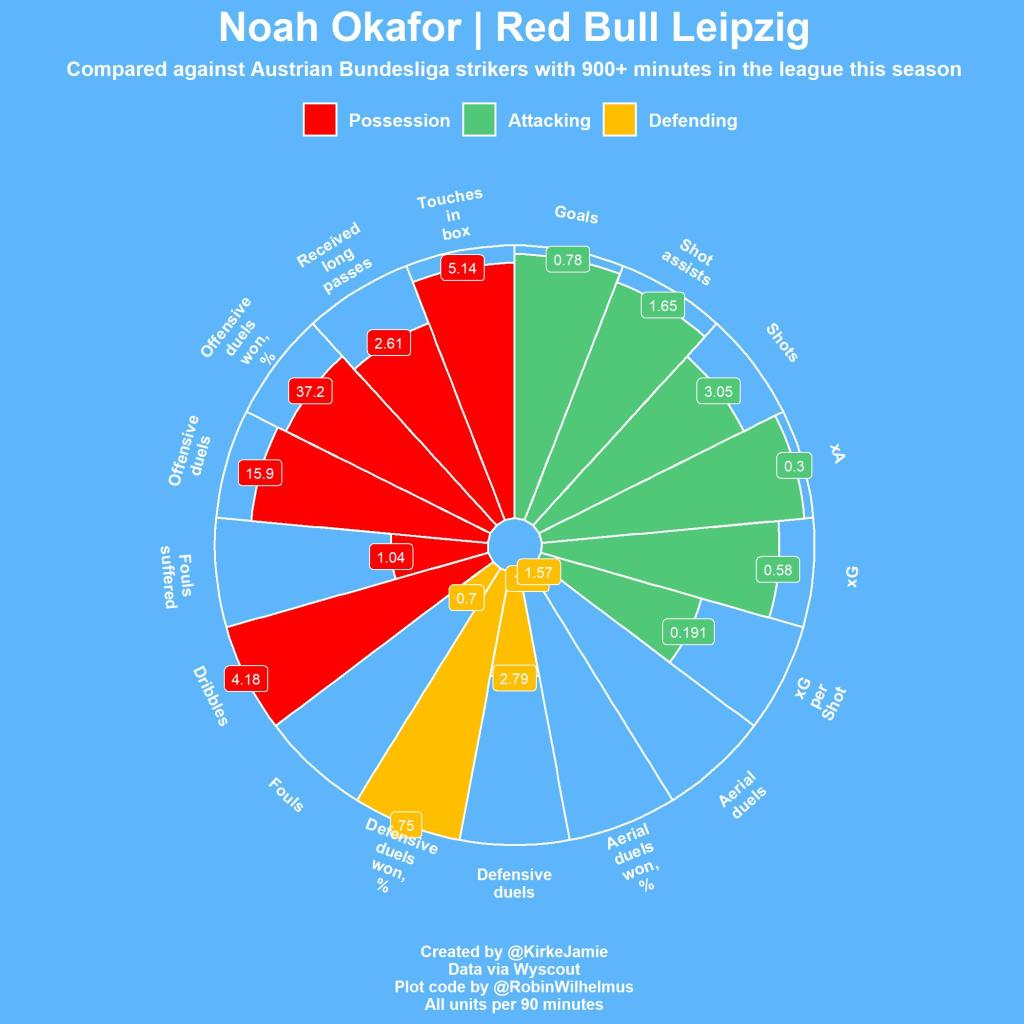
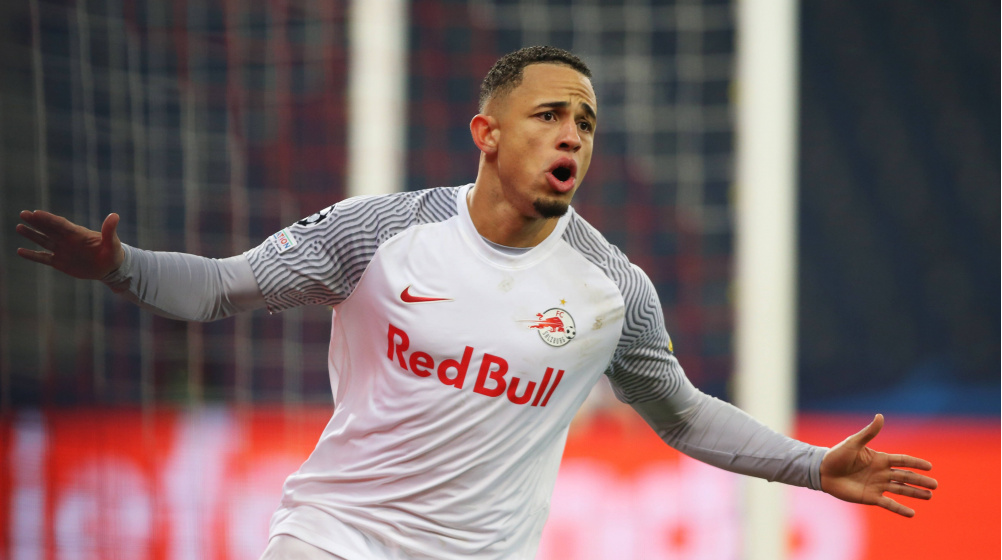
The last player we identified is 21-year-old Red Bull Salzburg and Switzerland striker Noah Okafor. Despite only playing 952 minutes in the league this season, thanks to Salzburg’s rotating door of exciting attacking depth, Okafor has scored 9 goals, behind only Karim Adeyemi, who he has most commonly played next to in their 4-Diamond-2 formation. The lack of natural width in this system means that Okafor is very comfortable operating in wide areas to create space for his teammates centrally. Not only is he confident in these spaces, he’s also extremely effective in them, thanks to his ability to beat players frequently on the dribble.. He has fantastic ball control that, when paired with his ability to shift his body weight quickly and his lightning bursts of pace, makes him a menace to defend against 1v1. Preferring to recieve on the left-hand side, Okafor will frequently look to drive inside onto his stronger right foot to shoot or create chances for others.
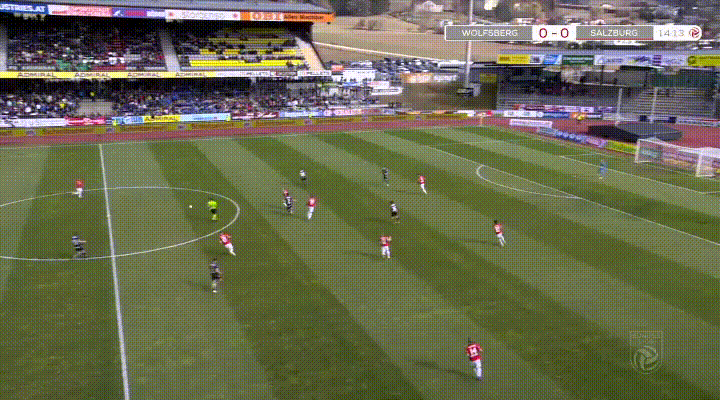
He is also a very dangerous player off the ball. He thrives in transition situations, looking to attack the backline with speed and latch onto the direct, vertical passes that Salzburg like to play. He can also drop to receive in deeper positions, using his size to hold his position when backing into defenders, and his dribbling ability in tight spaces to retain possession very effectively. When the ball goes wide, especially near the byline, he will drive into the box, looking to beat his marker to the front post, and arrive into high-quality shooting areas, backed by his very high xG per shot. That being said, he does struggle with more lofted crosses, due to his poor ability in the air.
In defense, there are obvious comparisons between Southampton and Salzburg, with both teams starting very narrow before triggering the press when the ball goes wide. This would certainly make Okafor’s transition to Hasenhüttl’s defensive system a natural one, especially since Salzburg’s PPDA in the Austrian Bundesliga is only 5.7 (although it does fall much more in line with Southampton’s when they’ve played in Europe, at 10.65).
If they could persuade him to join, signing Okafor would be a fantastic piece of business for Southampton. Not only would he improve the first team now, but his ceiling is such that he could net them a tidy profit, should he impress in the Premier League. However, with his contract still having 2 years left to run, and Salzburg being unlikely to want to sell two of their strikers in one transfer window (given Adeyemi is likely to leave), Southampton may find this difficult, even with the strong links between the two clubs.

